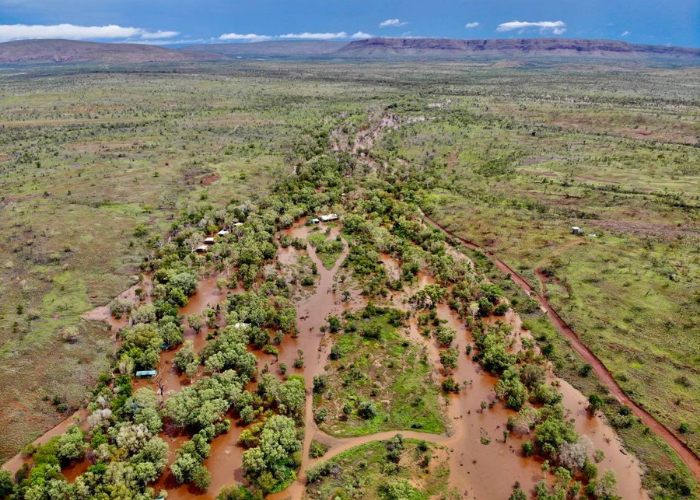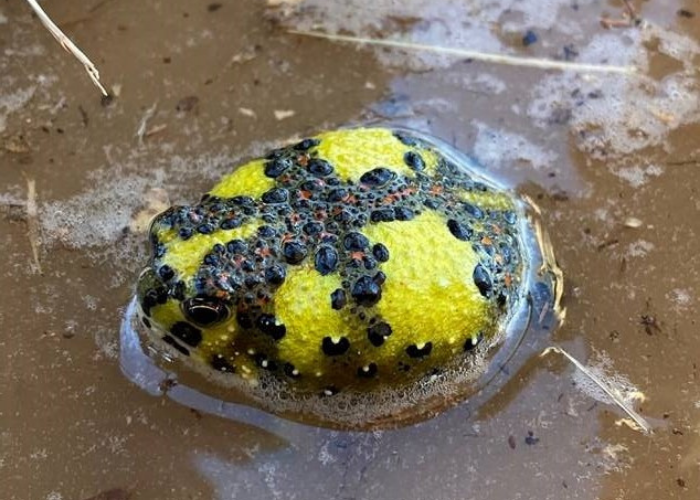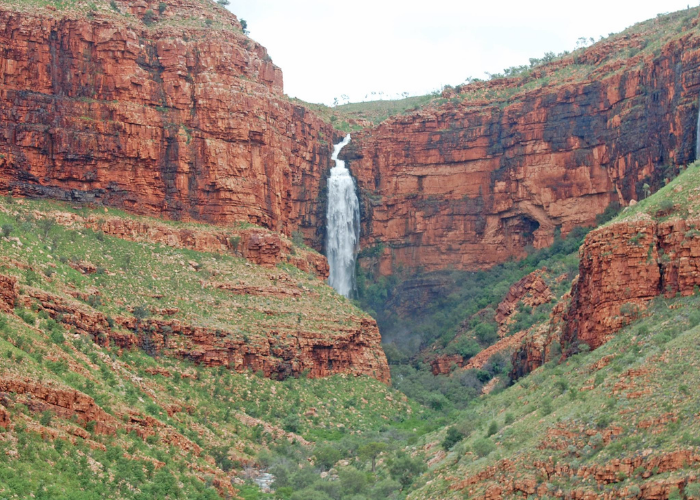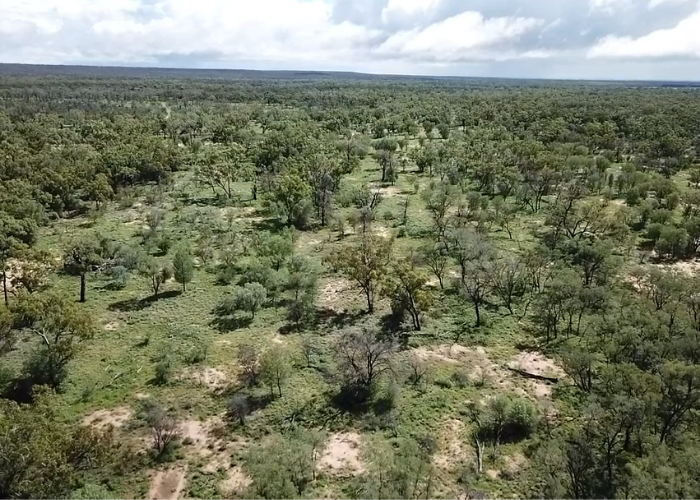La Niña may officially be over in Australia but the ecological ripple effects of the recent wet weather have only started to take effect and may provide a boost to native wildlife over the coming year.
Ecologists and sanctuary managers at Australian Wildlife Conservancy (AWC) say above-average rainfall during the recent La Niña phase (November 2020 – March 2021) which also triggered last month’s flooding on the east coast, has revitalised landscapes within AWC’s network of sanctuaries to create favourable conditions for threatened wildlife to flourish.
 M Lynn/AWC
M Lynn/AWC
Ecologists such as Susie Stockwell at Mornington Wildlife Sanctuary in WA said areas that have suffered from drier than average conditions since 2018 are now looking greener and richer with resources post west season. She said the much-needed rainfall comes as a relief particularly for threatened local wildlife.
“The landscape at Mornington has responded exceptionally to the rainfall and it’s looking soggier and greener,” Susie described the 560,000-hectare sanctuary after experiencing its third wettest season since 2004, with 1,182mm of rain in 2020/21 – double the 551mm in the 2019/20 wet season and three times the 404mm that fell in 2018/19.
“A number of our local species undergo boom and bust periods, largely in response to rainfall. They rely on the wet season for breeding because of the extra resources available for feeding and raising their young,” Susie explained. “We expect to see massive changes in the abundance of local species over the next 12 months, particularly among threatened small mammals and birds such as the Gouldian Finch and Purple-crowned Fairywren.”
Susie and the team at Mornington are seeing early impacts from recent rainfall. After several significant floods, the Fitzroy River has been transformed into a fast-flowing torrent, a dramatic change from the string of still pools which were present late last year. There is additional frog life and populations of fish have increased in the catchment, which is one of Northern Australia’s biggest river systems.
 A Howe/AWC
A Howe/AWC
Nature in and around Bowra Wildlife Sanctuary in south-west Queensland is soaking up nearly 300m of rain that fell during the summer of La Niña. An uncommonly large amount of rainfall, it ended late March with a generous dump of 75mm.
“The sanctuary went from very dry to very green,” noted Emily Rush, Australian Wildlife Conservancy North East Ecologist.
Emily said signs that wildlife was seeing the benefits from the wetter environment were evident days after the final flash of rainfall with a squadron of 40 pelicans seen flying above the sanctuary and an incredible six frog calls recorded on a single night during targeted surveys.
“This above average rainfall only occurs every few years but brings with it a fresh burst of life,” Emily added. “It floods the low-lying areas and create vital breeding spaces for many of the arid zone frogs. After the ground has absorbed all the water, it brings a bloom of plant growth which supports growing populations of insects, birds, small mammals and reptiles.”
“As a birdwatcher’s paradise, we’re also expecting to see huge flocks of birds including budgies and cockatiels coming to Bowra in the coming months, while the Macquarie Turtle will finally be able to move between billabongs and waterways that have been isolated during the dry times,” she added.
 C Kobel/AWC
C Kobel/AWC
Pilliga National Park, where AWC works in partnership project with the NSW National Parks and Wildlife Service under the NSW government’s Saving Our Species program, benefitted from NSW’s March floods with 102mm of rainfall. The downpour was welcomed by the team as it replenished the flow of Rocky Creek, the major watercourse which flows through the fenced feral predator-free area in the Pilliga. The ephemeral creek is the deepest it has been in over two years, acting as a lifeline for wildlife within the 35,750-hectare project area.
Although Scotia Wildlife Sanctuary missed substantial rainfall during NSW’s most recent floods, the iconic AWC property which lies within the Murray-Darling basin has seen conditions improve over the last 12 months compared to previous dry years. Around 232mm of rain fell throughout 2020, up from a measly 48mm in 2019.
Tali Moyle, Australian Wildlife Conservancy Ecologist at Scotia Wildlife Sanctuary, said plants have resprouted while annual grasses and forbs now cover the ground thanks to this prolonged period of better conditions.
“We’re seeing species of birds that we haven’t seen in years such as Pied Honeyeaters, Budgies and Cockatiels,” Tali said. “We also get frogs, Fairy Shrimp and inland molluscs pop up when we have good amounts of rain.”
 M McLaren/AWC
M McLaren/AWC
In the NT, La Niña turbocharged the wet season with high levels of rain after seven years of well under par rainfall. Pungalina-Seven Emu Sanctuary in the Gulf of Carpentaria experienced a good wet season with rainfall of 1,250mm, up from 600mm in 2019 and 700mm in 2018.
Gavin Enever, Sanctuary Manager, said rainfall has contributed to a number of early positive changes around the 306,911-hectare property including additional grass growth and seeds as well as increased sightings of Crimson Finches and Purple-crowned Fairywrens.
“The wet season recharges the underground springs, which feed into the main rivers and helps connect the upstream environments with the estuaries and mangrove habitats towards the coast,” Gavin explained. “The wet season growth provides food and shelter for the wildlife to get through the dry season. We currently have a lot more resources as far as seed bank goes and this is significant to the ecology of the tropical savannah.”
Recent rain also enables Gavin to kick off the prescribed burning program for 2021, which is essential to maintaining a healthy mix of younger and older vegetation, and managing fuel loads to mitigate the damage caused by wildfires later in the dry season. The plan’s successful implementation relies on significant moisture in the grass and trees.
“We only burn when there is moisture in the system – it means everything is able to bounce back faster when it is saturated,” he said.
Australia’s wildlife needs our help now more than ever. Thank you for your support, which is enabling AWC to restore populations of native animals around Australia.
Support Australia's native wildlife